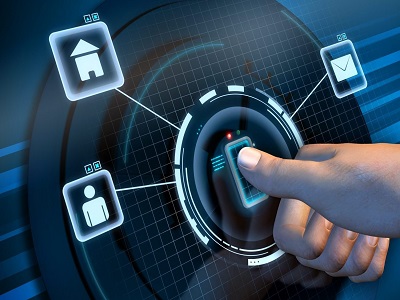
BIOMETRIC
Biometric authentication is a security process that uses unique physical or behavioral characteristics to verify a person's identity. These characteristics are often referred to as biometric identifiers and can include:
1. **Fingerprints**: The patterns of ridges and valleys on an individual's fingers are unique to each person and can be captured using fingerprint scanners.
2. **Facial Recognition**: This technology analyzes facial features, such as the distance between the eyes or the shape of the jawline, to identify individuals from images or video footage.
3. **Iris Recognition**: Iris patterns, which are the unique patterns of the colored part of the eye surrounding the pupil, can be captured using specialized cameras and used for biometric authentication.
4. **Voice Recognition**: This technology analyzes characteristics of an individual's voice, such as pitch, tone, and cadence, to verify their identity.
5. **Hand Geometry**: The size and shape of an individual's hand, as well as the lengths of their fingers, can be used for biometric authentication.
6. **Vein Recognition**: Vein patterns in the palm or back of the hand can be captured using infrared light and used for authentication.
7. **Gait Recognition**: This technology analyzes an individual's walking pattern, including their stride length and the way they swing their arms, to identify them.
Biometric authentication offers several advantages over traditional methods of authentication, such as passwords or access cards:
- **Accuracy**: Biometric identifiers are unique to each individual and difficult to forge, making biometric authentication more secure than traditional methods.
- **Convenience**: Biometric authentication can be faster and more convenient for users, as they don't need to remember passwords or carry access cards.
- **Non-transferable**: Biometric identifiers are inherently tied to an individual and cannot be easily shared or transferred to others.
- **Hygiene**: Biometric authentication methods such as fingerprint or iris recognition do not require physical contact with the authentication device, reducing the risk of spreading germs or viruses.
However, biometric authentication also presents some challenges and considerations, including concerns about privacy, the need for secure storage and transmission of biometric data, and the potential for false positives or false negatives in biometric matching algorithms.
Overall, biometric authentication is a powerful tool for enhancing security and convenience in a wide range of applications, including access control, time and attendance tracking, and identity verification.


